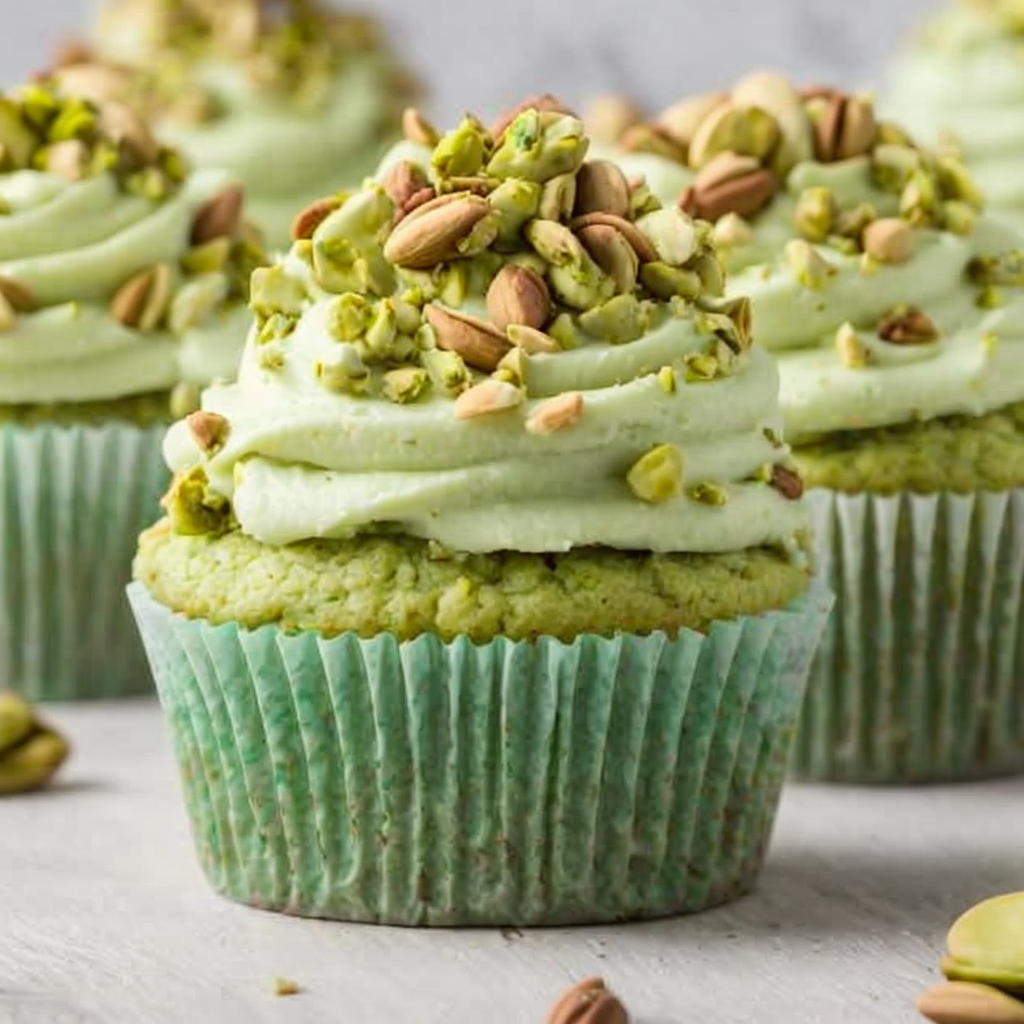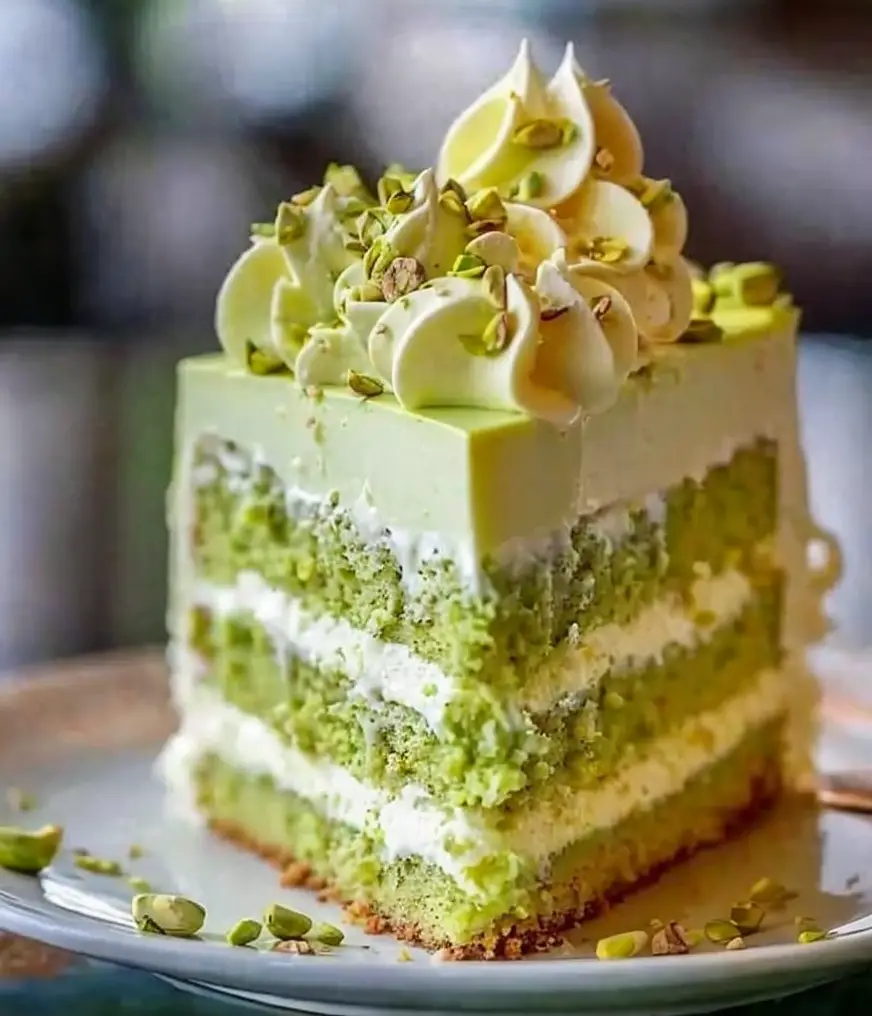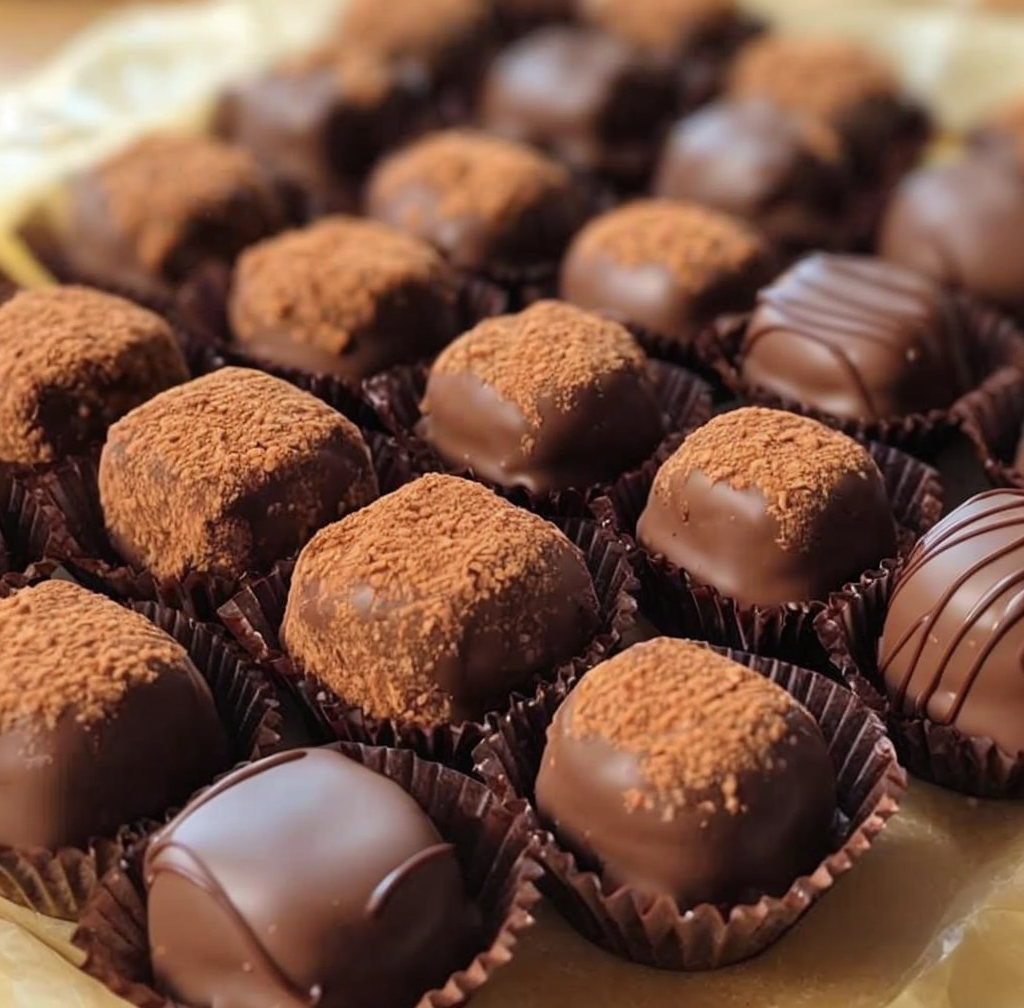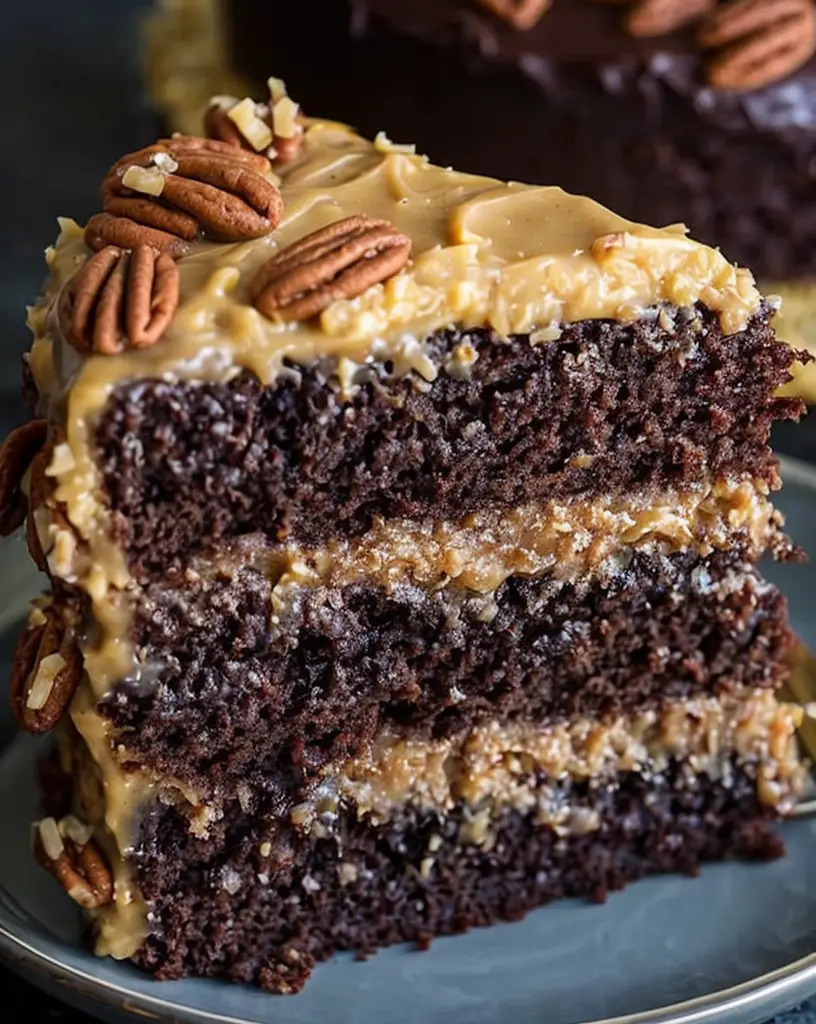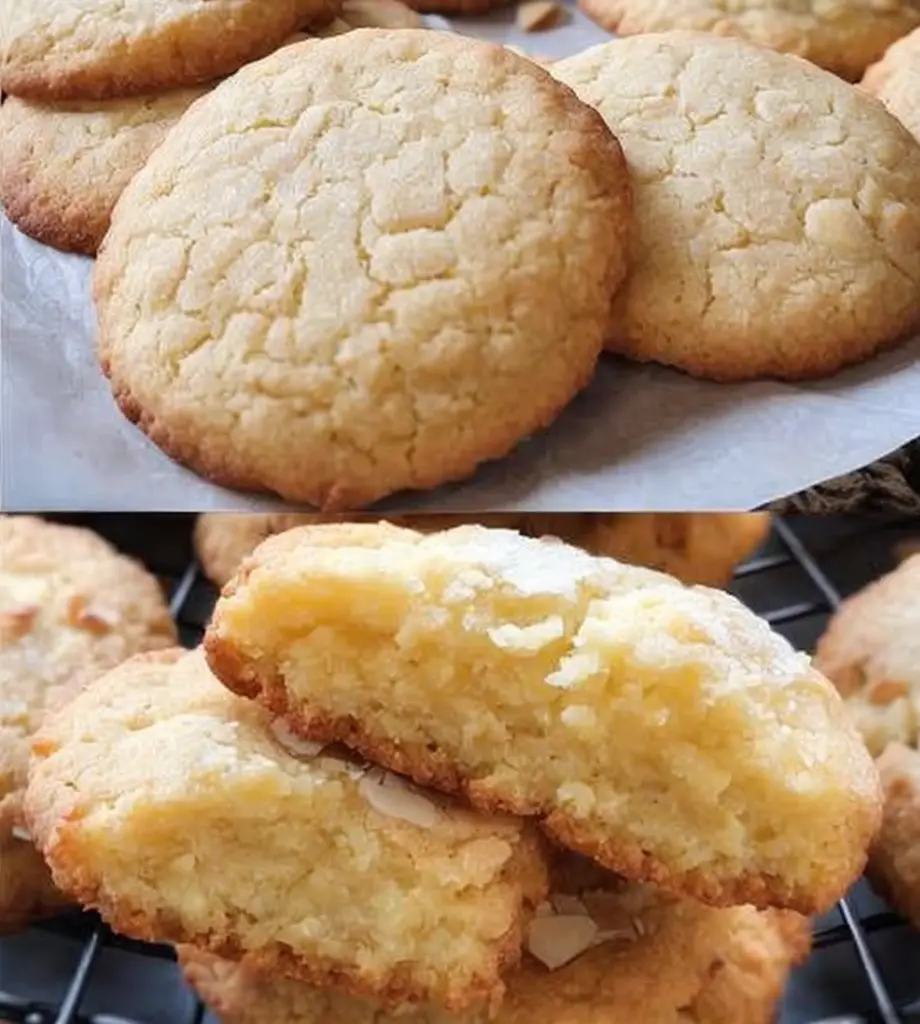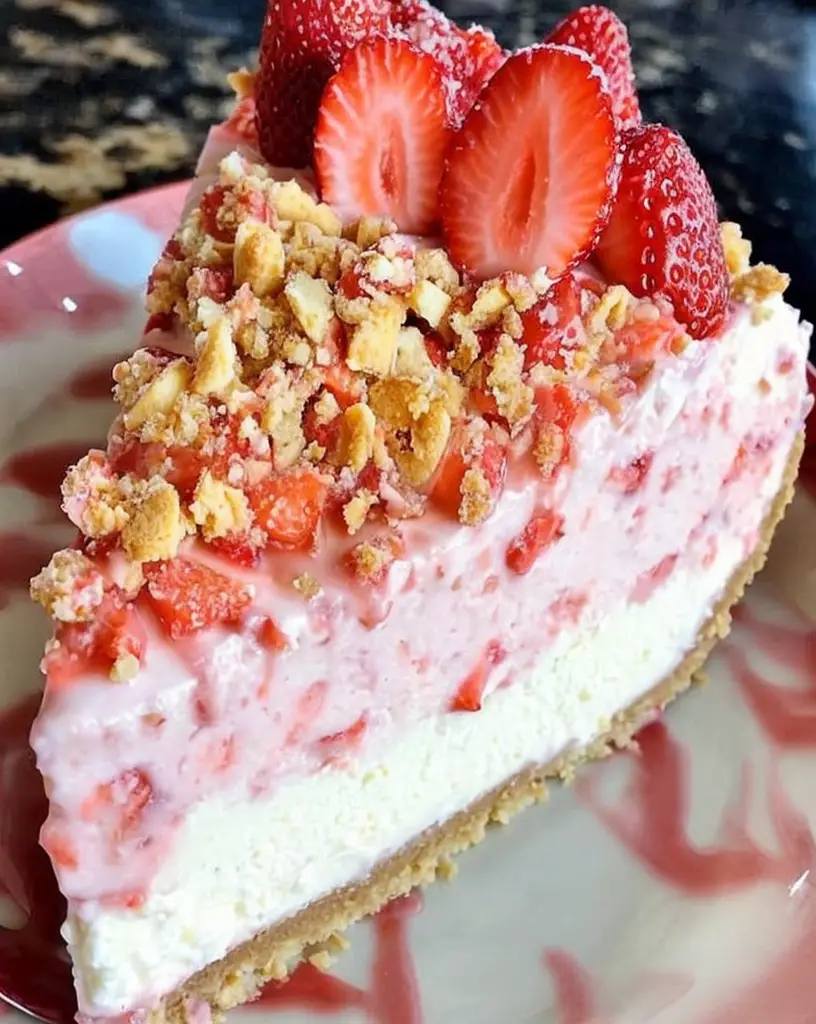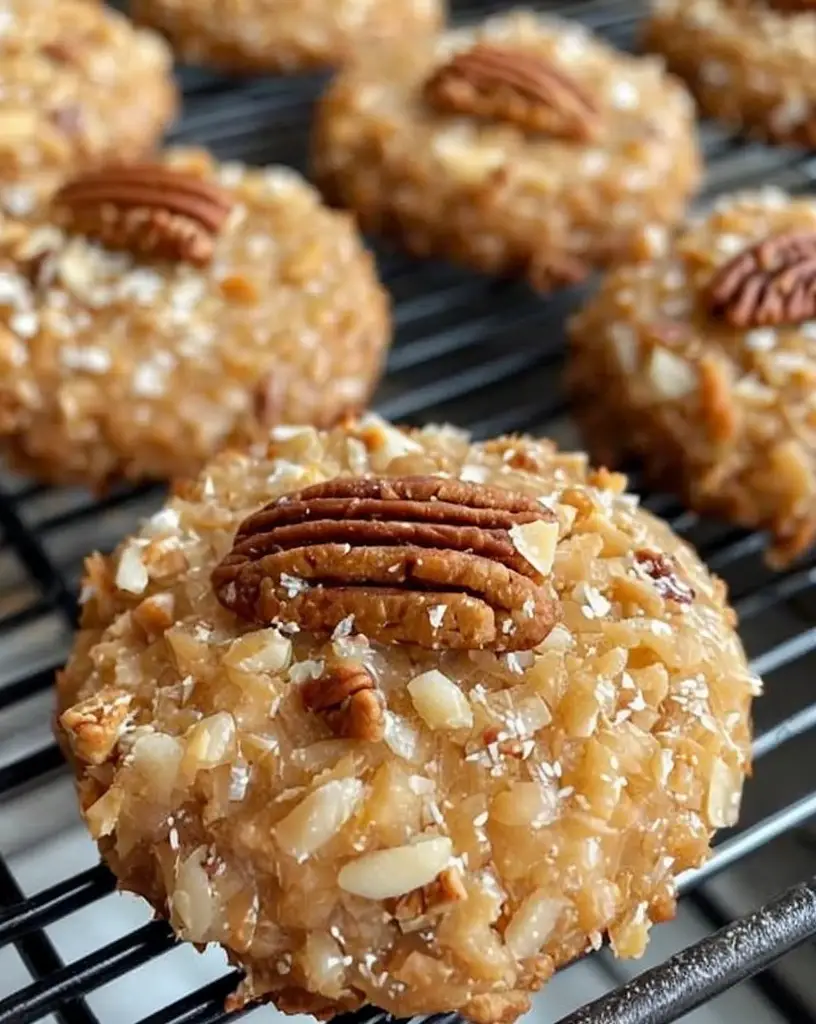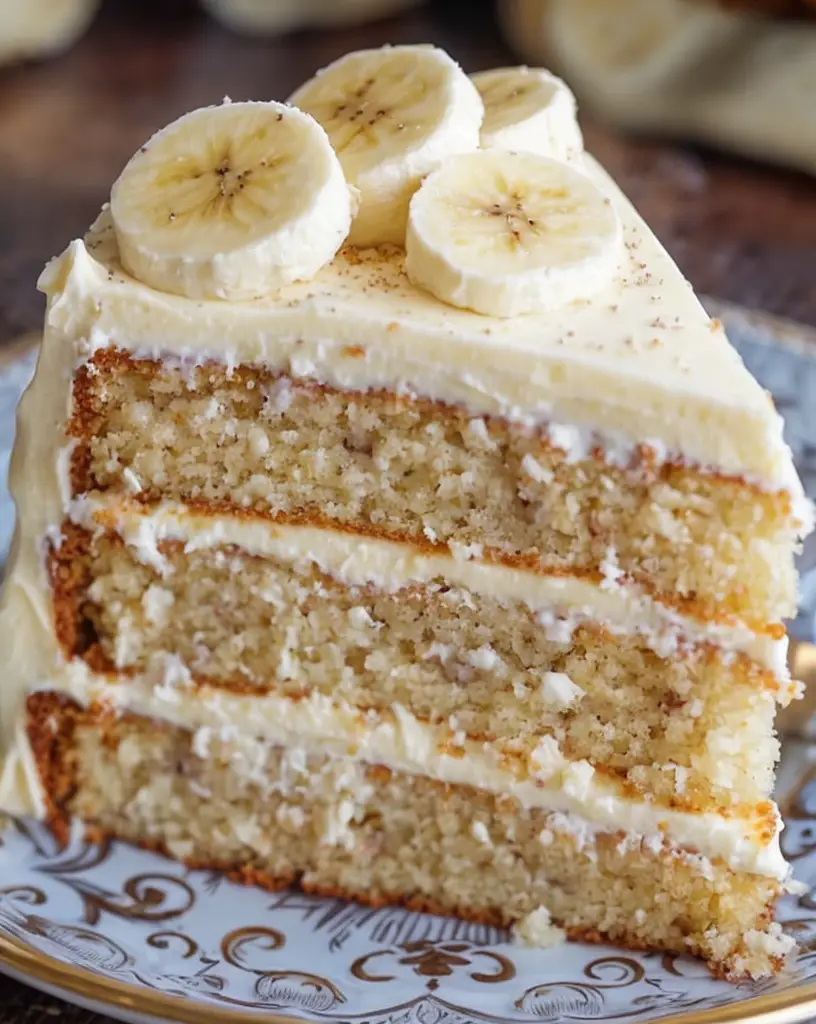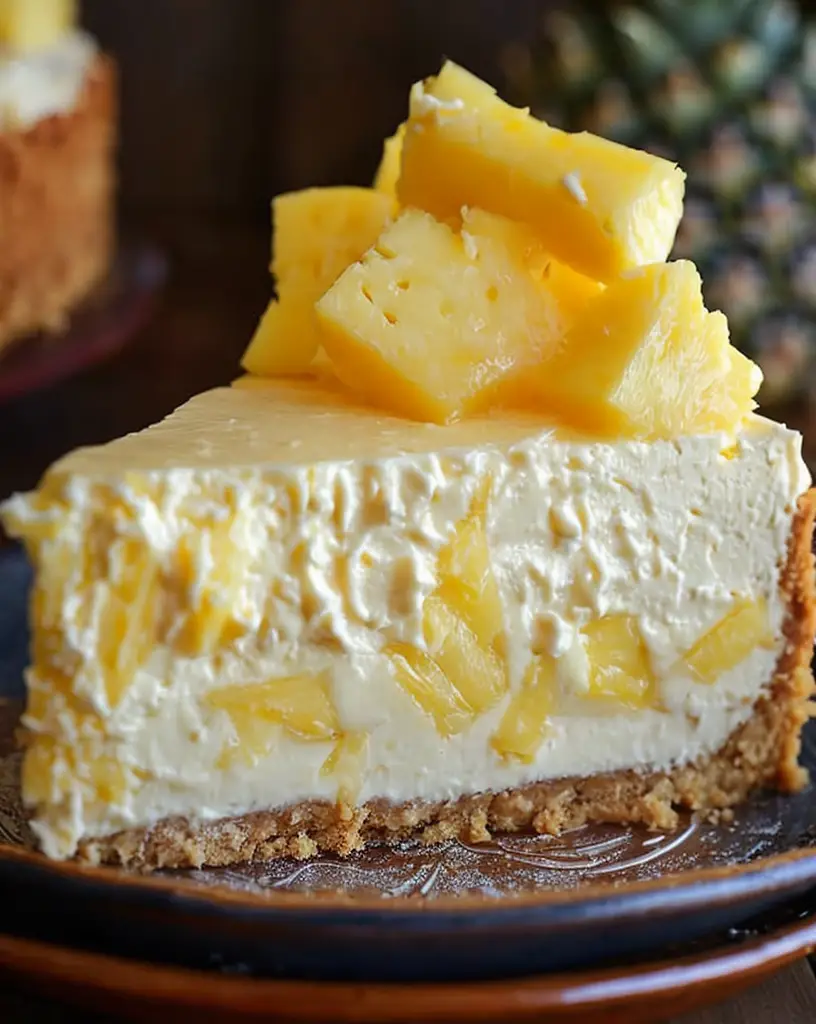Delicious Homemade Pistachio Cupcakes: A Tasty Delight
Pistachio cupcakes are a sweet and flavorful treat that everyone will adore. These delicious homemade pistachio cupcakes have a wonderful nutty flavor, thanks to ground pistachios, paired with a silky frosting that elevates them to a decadent dessert. Imagine biting into a fluffy, moist cupcake that not only satisfies your sweet tooth but also gives you a delightful crunch from the pistachio nuts. This recipe harnesses the rich taste of pistachios, making it an absolute crowd-pleaser for special occasions or just a cozy treat at home.
These cupcakes are not only heavenly in taste but also a feast for the eyes. Their pale green hue reminiscent of a lush pistachio grove, topped with a smooth frosting, presents beautifully on any table. Whether you’re celebrating a birthday, preparing for a tea party, or simply indulging in an afternoon snack, these pistachio cupcakes will surely impress your guests and family alike. Prepare to take your dessert game to the next level with this unique and flavorful recipe!
Quick Recipe Highlights
- Flavor Profile: Sweet with a rich, nutty essence from the pistachios that pairs perfectly with the creamy frosting.
- Texture: Light and fluffy cupcakes with a subtle crunch from ground pistachios.
- Aroma: A delightful blend of fresh pistachios and vanilla that fills your kitchen with warmth.
- Visual Appeal: Beautifully pale green cupcakes topped with silky frosting and garnished with chopped pistachios.
- Skill Level Needed: A beginner-friendly recipe that requires no advanced baking techniques.
- Special Equipment: Standard baking tools like a mixing bowl, cupcake pan, and an electric mixer.
Recipe Overview
- Difficulty Level: Easy, making it suitable for novice bakers or those looking to whip up a quick dessert.
- Category: Dessert, perfect for parties, coffee breaks, or simply indulging in at home.
- Cuisine: Inspired by Middle Eastern flavors, highlighting pistachios as a staple in many traditional desserts.
- Cost: Budget-friendly ingredients yield delightful results without breaking the bank.
- Season: Enjoy these cupcakes year-round, but they shine during spring and summer with their refreshing flavor.
- Occasion: Ideal for birthdays, weddings, or any celebration where you want to impress with a unique treat.
Why You’ll Love This Recipe
These homemade pistachio cupcakes provide a stunning balance of flavor and texture that will leave your palate satisfied and happy. The nutty and slightly sweet flavor of pistachios is elevated by the creamy frosting, creating a symphony of taste that dances on your tongue. Each bite offers a delightful mix of fluffy cake and crunchy nuts, ensuring every cupcake experience is memorable. Not only do they taste great, but they also surprise guests who are accustomed to more traditional flavors.
The convenience factor cannot be overstated; whipping up these pistachio cupcakes takes minimal time and effort, making them perfect for both spontaneous baking sessions and planned events. The simple preparation method means you can have a batch ready in just over half an hour, allowing you to satisfy cravings or entertain guests without spending hours in the kitchen. Moreover, they can be made ahead of time and stored, ensuring fresh treats are always at hand for any occasion.
These pistachio cupcakes also pack in nutritional advantages, as pistachios are a good source of healthy fats, fiber, and protein. By incorporating these nutritious nuts into your dessert, you can enjoy a guilt-free indulgence that aligns with a more mindful approach to eating. This unique dessert can awaken fond childhood memories of baking, or be a perfect addition to new family traditions during holidays or celebrations.
Socially, these cupcakes are a fantastic choice for gatherings and events. Their unique flavor and beautiful presentation make for great conversation starters, and your guests will appreciate the effort behind a homemade treat. With their soft texture and inviting aroma, they create a warm and welcoming vibe that will make any gathering more enjoyable. Their cost-effectiveness adds additional appeal, allowing you to create a dessert that feels luxurious without overspending.
In short, you’ll love these delicious homemade pistachio cupcakes for their fantastic taste, quick preparation, and the joy they bring to both baking and sharing with others.
Historical Background and Cultural Significance
The origin of pistachios can be traced back to the Middle East, where they have been cultivated for thousands of years. In many cultures, pistachios symbolize wisdom and prosperity, making them a popular choice for celebratory desserts and special occasions. Their rich history as a prized nut in various culinary traditions has influenced countless recipes, allowing these flavors to reach kitchens worldwide. As you indulge in these delicious homemade pistachio cupcakes, you partake in a heritage that has long celebrated the unique taste of pistachios.
Pistachios are often featured prominently in Middle Eastern sweets and desserts, such as baklava and halva. The cultivated appreciation for their unique taste has led to numerous adaptations and regional variations across cultures, showcasing diverse cooking techniques and flavor combinations. Understanding this historical significance can deepen the enjoyment of these cupcakes and connects the dessert to a larger culinary tradition.
Over time, the evolution of recipes featuring pistachios has led to creative interpretations that marry traditional flavors with modern techniques. Pistachio cupcakes have gained popularity as bakers seek new ways to incorporate this nut into lighter desserts, perfectly aligning with contemporary trends that value both flavor and visual appeal. This evolution reflects the versatility and adaptability of pistachios, as they have successfully transitioned from traditional dishes to modern baking favorites.
Regional variations of pistachio desserts continue to flourish, influenced by local ingredients and cultural preferences. While Western adaptations may lean towards sweeter flavors and buttercream frostings, traditional Middle Eastern pastries often incorporate honey and simpler preparations. This diversity aligns well with global culinary traditions, allowing homestyle pistachio cupcakes to evolve while honoring their rich roots.
Ingredient Deep Dive
– **Pistachios**: Rich in flavor, these nuts are packed with nutrients. They provide healthy fats, protein, and fiber, making them a healthier choice for snacking. When choosing pistachios, look for unsalted and raw varieties to retain their natural flavor and benefits. Store them in an airtight container in a cool, dry place to maintain freshness. If you’re out of pistachios, almonds or walnuts can serve as suitable substitutes, offering their unique essences to your cupcakes.
– **Flour**: Typically, all-purpose flour is the choice for cupcakes, giving them the perfect softness and lightness. Whole wheat flour can be used for a nutritious twist, though it imparts a denser texture. Choose unbleached flour for healthier baking. Ensure it’s stored in a cool, dry environment to prevent spoilage. You can substitute with gluten-free flour blends to cater to those with dietary restrictions.
– **Sugar**: Granulated sugar adds sweetness and moisture to the cupcakes. Brown sugar can be used for a deeper, caramel-like flavor if desired. Store sugar in an airtight container to keep it dry. If you’re looking for alternatives, consider coconut sugar or honey, but keep in mind they may alter the final texture of your cupcakes.
– **Butter**: Unsalted butter creates a rich flavor and tender texture in the cupcakes. Use high-quality butter for the best results. Ideally, it should be stored in the refrigerator but can be frozen for longer shelf life. For a dairy-free option, you can substitute with coconut oil or a dairy-free margarine.
– **Eggs**: Eggs add moisture and structure to the cupcakes. Fresh, cage-free eggs are often preferred for their superior quality. If you’re looking for vegan alternatives, flax eggs or unsweetened applesauce can work well but may slightly alter the texture.
– **Milk**: Whole milk provides moisture and richness. You can substitute with almond milk or oat milk for a plant-based option. Ensure it’s stored properly in the refrigerator to maintain freshness. If dairy allergies are a concern, coconut or soy milk can also work wonderfully.
Common Mistakes to Avoid
- Not measuring ingredients accurately: Precision is key for baking success. Use measuring cups and spoons specifically designed for dry and liquid ingredients.
- Overmixing the batter: This can lead to tough cupcakes. Mix just until combined to maintain a light and fluffy texture.
- Using old ingredients: Check the expiration dates on your baking staples. Fresh ingredients yield better results.
- Not preheating the oven: Skipping this step can lead to uneven baking. Ensure it’s preheated to the correct temperature before putting your cupcakes in.
- Neglecting to line or grease the cupcake pan: This can make it difficult to remove the cupcakes later. Always use cupcake liners or grease the pan well.
- Baking at the wrong temperature: Temperatures that are too high or low can affect the rise and texture of your cupcakes. Use a reliable oven thermometer for accuracy.
- Frosting cupcakes too soon: Allow your cupcakes to cool completely before frosting to avoid melting the icing.
- Skipping the taste test: Don’t skip trying the batter before baking. Adjust flavors as necessary to suit your personal preference.
- Ignoring the cooling time: Let your cupcakes cool in the pan for a few minutes before transferring to a wire rack to prevent sogginess.
- Not garnishing: Elevate your presentation by adding chopped pistachios or a sprinkle of powdered sugar on top of frosted cupcakes.
Essential Techniques
– **Creaming Butter and Sugar**: This technique is vital for creating a light and fluffy texture in your cupcakes. By beating the butter and sugar together until pale and fluffy, you introduce air into the mixture, helping the cupcakes rise beautifully. Aim for a light color and soft, airy consistency. Avoid overbeating, which can change the structure of the batter.
– **Proper Folding Technique**: When incorporating ingredients, such as flour into your wet mixture, use a gentle folding motion to maintain the airiness of the batter. Fold using a spatula, sweeping from the bottom of the bowl upward, until just combined. This technique is essential to avoid deflating the batter, which may affect cupcake texture.
– **Cooling Time**: Allow your cupcakes to cool completely before decorating. This helps maintain structural integrity and prevents melting frosting. Patience is key here; it’s tempting to frost warm cupcakes, but waiting ensures a better appearance and taste.
– **Decorating**: The right decorating techniques can elevate your pistachio cupcakes visually. Using a piping bag with various nozzles can allow for intricate designs. Sprinkling chopped pistachios or edible flowers can enhance presentation, adding a personal touch to your baked goods.
Pro Tips for Perfect Delicious Homemade Pistachio Cupcakes
– Use room-temperature ingredients: Allow your butter, eggs, and milk to sit at room temperature for optimal mixing.
– Choose quality pistachios: Fresh, unsalted pistachios will impart the best flavor.
– Experiment with frosting: Vanilla or cream cheese frosting complements pistachio flavor beautifully; try adding pistachio flour for an extra nutty element.
– Stay organized: Prepare all your ingredients in advance to ensure a smooth baking process.
– Keep an eye on baking time: Check for doneness a few minutes earlier than the recipe states; they’re done when a toothpick inserted into the center comes out clean.
– Allow proper cooling: Cooling on a wire rack helps maintain cupcake structure and prevents sogginess.
– Don’t rush the decorations: Take time to decorate your cupcakes beautifully; it enhances the overall eating experience.
– Try different flavors: While pistachios are stunning on their own, adding a hint of almond extract can elevate flavors further.
Variations and Adaptations
Feel free to get creative with your pistachio cupcakes! For regional variations, consider incorporating saffron or rose water for a Middle Eastern flair. Seasonal adaptations might include peppermint frosting for winter festivities or light lemon zest for a refreshing summer twist.
Dietary modifications can cater to various needs; swap out regular flour for gluten-free blends to serve guests with gluten intolerance. You can also create a vegan version by substituting flax eggs and using plant-based milk and butter alternatives. Flavor variations such as chocolate chips or orange zest can create a delightful contrast with the pistachio flavor.
Texture modifications might involve adding a layer of pistachio cream or incorporating a crunchy topping made from crushed pistachios mixed with butter and sugar. Experimenting with different frosting flavors, like chocolate ganache or coconut cream, creates unique tasting experiences. Lastly, presentation alternatives such as mini cupcakes or layered cakes can add a fun twist to your dessert spread.
Serving and Presentation Guide
For serving, consider using decorative cupcake liners that match the occasion. Arrange your pistachio cupcakes on a beautiful cake stand for an eye-catching display. Garnishing with crushed pistachios or edible flowers adds a lovely finishing touch. Smoking pistachio oil as a drizzle can also enhance flavor and appearance.
Temperature plays a significant role; serve your cupcakes at room temperature to bring out the flavors fully. Portion control is vital at gatherings; mini cupcakes can be an exciting way to offer a variety of flavors without overwhelming your guests. Also, consider pairing each cupcake with a small scoop of ice cream for an indulgent dessert experience.
Wine and Beverage Pairing
When it comes to pairing wines with your delicious homemade pistachio cupcakes, consider a light, fruity white wine like Moscato or a sparkling Prosecco. The sweetness and acidity in these beverages beautifully complement the nutty flavors of the cupcakes.
For non-alcoholic alternatives, opt for herbal teas, such as chamomile or mint, which will enhance the flavor profile without overpowering the sweetness. If you enjoy coffee, a smooth cappuccino or a light roast coffee can make for a delightful pairing, bringing out the nutty notes from the pistachios.
Temperature considerations are essential; serve white wines chilled to maintain their refreshing qualities, while the cupcakes should be at room temperature to enhance their flavor.
Storage and Shelf Life
To store your delicious homemade pistachio cupcakes effectively, keep them in an airtight container at room temperature for up to three days. For longer storage, place them in the refrigerator, where they can last up to a week. If you choose to freeze them, ensure they are properly wrapped in plastic wrap and placed in an airtight container or freezer bag to maintain freshness for up to three months.
Signs of spoilage include an off smell, hardened texture, or visible mold; discard any cupcakes that exhibit these signs. When reheating, a quick blast in the microwave for about 10-15 seconds can restore their softness without drying them out.
Make Ahead Strategies
To make your baking process smoother, consider baking your pistachio cupcakes a day in advance. Allow them to cool completely before storing them in an airtight container to retain moisture. Frosting can also be prepared ahead of time; store it in a convenient piping bag and refrigerate until just before decorating.
Assessing the quality impact reveals that while freshly baked cupcakes offer the best flavor, a day or two of resting time can enhance the interplay of flavors. If you’re making them for a special event, consider assembling them the morning of the event for maximum freshness.
Reheating previously baked cupcakes is straightforward; gently warm them in the microwave for just a few seconds before serving. You can add fresh elements like whipped cream or sliced fruit just before serving to brighten the dish and maintain that fresh taste.
Scaling Instructions
If you find yourself in need of more cupcakes, scaling up the recipe is simple. Doubling or tripling the ingredients will yield larger batches; however, ensure your mixing bowl can accommodate the increased volume without overflowing. Adjust bake times slightly if using larger pans or trays, as they may require additional cooking time to ensure even baking.
Halving the recipe is also possible if you’re looking to make a smaller batch. Just maintain the same proportions for each ingredient to keep the flavor consistent. For equipment adjustments, make sure you have additional cupcake pans on hand to manage any increased batter.
Timing modifications may be necessary, as larger or extra trays might take longer to bake through completely. It’s essential to monitor doneness using a toothpick to ensure they are fully baked.
Nutritional Deep Dive
A detailed macro breakdown reveals that each pistachio cupcake provides a balanced mix of carbohydrates, healthy fats, and protein from the pistachios and other ingredients. The wholesome fats from pistachios contribute positively to heart health, while the natural sweetness from sugar gives energy without relying heavily on processed ingredients.
Micronutritional analysis shows that these cupcakes are a source of vitamins and minerals like vitamin E, magnesium, and potassium, found in pistachios. These nutrients play crucial roles in maintaining various bodily functions, from muscle health to immune support.
In terms of health benefits, incorporating these cupcakes into a balanced diet, without excessive indulgence, can promote a nutritionally sound choice for dessert lovers. However, it’s important to be mindful of portion sizes, as consuming too many sugary treats can lead to weight gain or sugary spikes.
For those managing their weight or caloric intake, consider enjoying these pistachio cupcakes during a special occasion, serving them alongside healthier snacks, or opting for mini versions to satisfy your sweet tooth without overdoing it.
Dietary Adaptations
If you are looking for gluten-free adaptations, using a blend of gluten-free flours can yield delightful results, ensuring that gluten-intolerant family and friends can enjoy a tasty treat. For those with lactose intolerance, consider substituting dairy ingredients such as milk and butter with their non-dairy counterparts without compromising the flavor.
For a vegan twist, opt for flax eggs in place of regular eggs and vegan butter or coconut oil in place of traditional butter. These modifications keep the cupcakes plant-based, allowing more individuals to enjoy them during gatherings.
If you’re on a low-carb or keto diet, consider using almond flour instead of all-purpose flour, alongside a sugar substitute to maintain lower carbohydrate levels while delighting your taste buds.
If following a Paleo diet, ensure all ingredients are within the acceptable range for this lifestyle, opting for natural sweeteners like honey or maple syrup to enhance the flavor while adhering to clean eating.
Additionally, for those on low-FODMAP diets, adapting your ingredients can ensure that everyone can enjoy these delicious homemade pistachio cupcakes.
Troubleshooting Guide
– **Texture issues**: If your cupcakes are dense, it could be due to overmixing batter or not using room temperature ingredients. Be gentle when combining and ensure eggs and butter are at room temperature for fluffier results.
– **Flavor balance**: If your cupcakes taste lackluster, consider using fresher ingredients and adding a pinch of salt to enhance sweetness.
– **Temperature problems**: If cupcakes are overcooked, double-check your oven’s accuracy with a thermometer to avoid overly hot or cold baking.
– **Equipment challenges**: If you find your oven bakes unevenly, rotate pans halfway through baking to ensure uniform cooking.
– **Ingredient substitutions**: Be cautious when swapping ingredients; subtle differences can very much affect flavor and texture; do research before making swaps.
– **Timing concerns**: If unsure about baking time, start checking for doneness with a toothpick a few minutes before the recommended bake time.
Recipe Success Stories
Community feedback showcases how these delicious homemade pistachio cupcakes have delighted families and friends at various gatherings. Many bakers have reported successful adaptations, like using chocolate ganache instead of traditional frosting for an indulgent twist.
Certain readers have even shared their stories of successfully combining flavors, such as pairing these cupcakes with a raspberry filling for a burst of tartness, which balances the pistachio’s natural sweetness. Photography tips have also emerged from the community, with many suggesting natural lighting for capturing the beautiful pastel colors of these cupcakes.
The stories shared have also inspired new bakers to try their hands at this recipe, enriching the community with personal tweaks and creative flair. Each success story adds to this delightful recipe’s legacy, encouraging others to embark on their baking journey.
Frequently Asked Questions
A: Yes! You can bake the cupcakes ahead of time and store them in an airtight container for a few days. Frost them just before serving for the best flavor and freshness.
Q: How do I store leftover cupcakes?
A: Keep your cupcakes in an airtight container at room temperature for up to three days, or refrigerate them for up to a week.
Q: Can I freeze these cupcakes?
A: Absolutely! They can be frozen for up to three months. Ensure they are wrapped tightly to prevent freezer burn.
Q: What can I use as a frosting alternative?
A: Cream cheese frosting, ganache, or buttercream are excellent alternatives for those who prefer a different flavor profile.
Q: Are there gluten-free options for this recipe?
A: Yes, simply use a gluten-free flour blend in place of regular flour to create a gluten-free version of these cupcakes.
Q: Can I add other flavors?
A: Definitely! Consider adding extracts like almond or orange to enhance the pistachio flavor profile.
Q: How do I prevent my cupcakes from sticking?
A: Make sure to line your cupcake pans well with liners or grease them thoroughly before adding batter.
Q: How can I enhance the flavor of my pistachio cupcakes?
A: Adding a pinch of salt or a splash of vanilla extract can intensify flavor and elevate the overall taste.
Q: What can I do if my batter is too dry?
A: Add a splash of milk or water to your batter and mix until it’s at your desired consistency.
Q: Can I replace sugar with a sugar alternative?
A: Yes, feel free to use stevia, erythritol, or other sugar alternatives, but keep in mind it may change the texture.
Additional Resources
If you’re interested in more related recipes, consider exploring our collection of nut-based desserts, such as almond cakes and walnut brownies. These desserts highlight how versatile nuts can be in sweet recipes and provide various flavor profiles to explore.
For technique guides, our baking basics section covers everything from basic cupcake foundations to advanced decorating techniques, suitable for both novice and expert bakers. Ingredient information can also help you understand the nutritional content of your favorite items, allowing you to make informed decisions while baking.
For equipment recommendations, we offer detailed reviews on must-have tools that can enhance your baking experience, from quality mixers to efficient piping bags. Don’t forget to check out seasonal variations that celebrate holiday-specific ingredients to bring fresh twists into your favorite recipes!
Join the Conversation
We love hearing from our baking community! Share your experiences of making these delicious homemade pistachio cupcakes on social media, and tag us to join the conversation. Share your photos, and let us know your favorite variations or adaptations.
Leave reviews and suggestions to guide fellow bakers toward perfecting their treats; community feedback enriches our cooking journey. Consider sharing your thoughts on how these cupcakes turned out for your event or what flavors you paired with them.
The beauty of baking lies in sharing, and we encourage you to connect with friends and family through these delicious cupcakes that carry a rich history of flavor and tradition. Let’s inspire one another, one recipe at a time!
The Recipe
Delicious Homemade Pistachio Cupcakes
Serves: 12 cupcakes
Prep Time: 15 mins
Cook Time: 20 mins
Total Time: 35 mins
Kitchen Equipment Needed
- Cupcake pan
- Mixing bowl
- Electric mixer
- Piping bag (optional)
- Measuring cups and spoons
- Cooling rack
Ingredients
- 1 cup unsalted pistachios, finely ground
- 1 ½ cups all-purpose flour
- 1 cup granulated sugar
- ½ cup unsalted butter, softened
- 3 large eggs
- ½ cup milk
- 2 teaspoons baking powder
- 1 teaspoon vanilla extract
- ½ teaspoon salt
Directions
- Preheat the oven to 350°F (175°C) and line a cupcake pan with liners.
- In a mixing bowl, cream together the softened butter and sugar until light and fluffy.
- Add the eggs one at a time, mixing well after each addition. Stir in the vanilla extract.
- In a separate bowl, whisk together the flour, baking powder, ground pistachios, and salt.
- Gradually add the dry ingredients to the butter mixture, alternating with the milk, and mix until just combined.
- Fill each cupcake liner about two-thirds of the way full with batter.
- Bake in the preheated oven for 20 minutes or until a toothpick comes out clean.
- Allow cupcakes to cool in the pan for 5 minutes before transferring to a wire rack to cool completely.
- Frost as desired and enjoy!
Recipe Notes
- Feel free to adjust the amount of ground pistachios for a stronger nutty flavor.
- If you prefer, sprinkle also some chopped pistachios on top of the frosting for added texture.
- For a variation, try adding a splash of almond extract for more depth of flavor.
